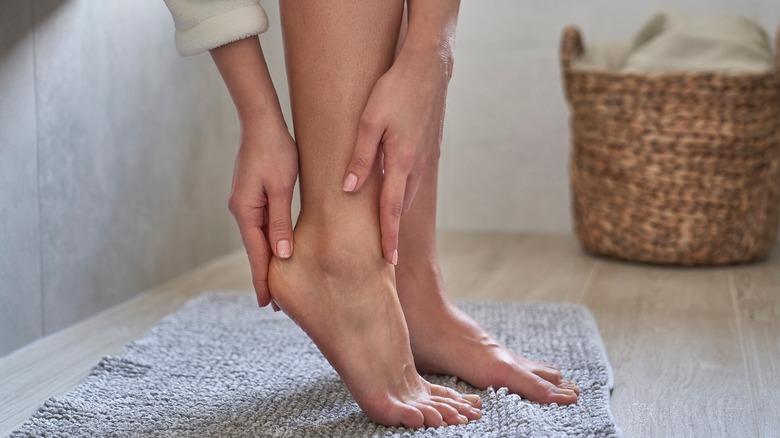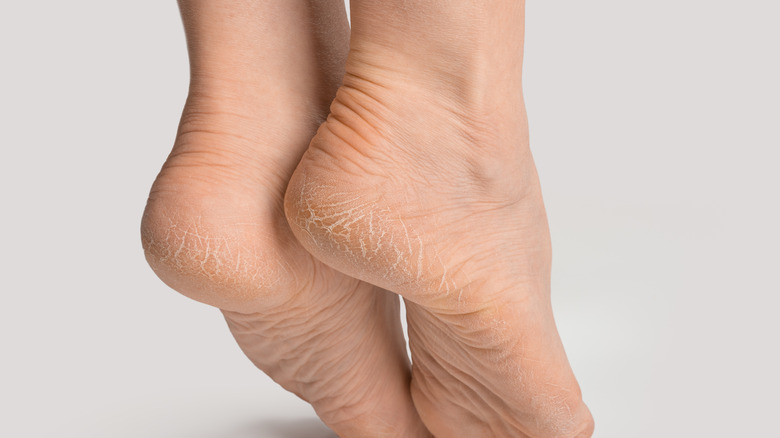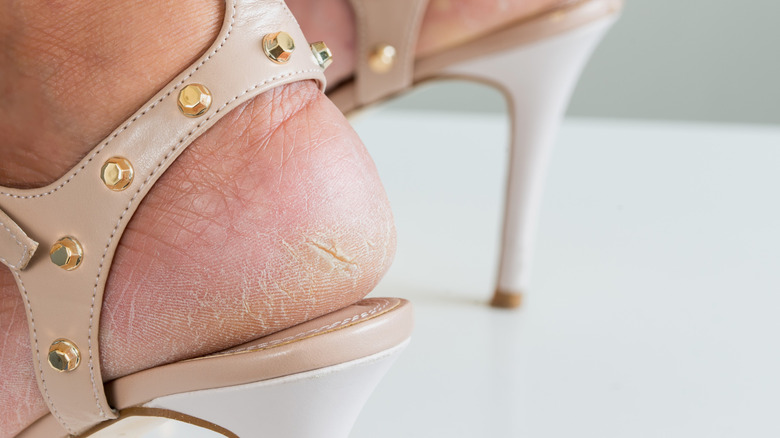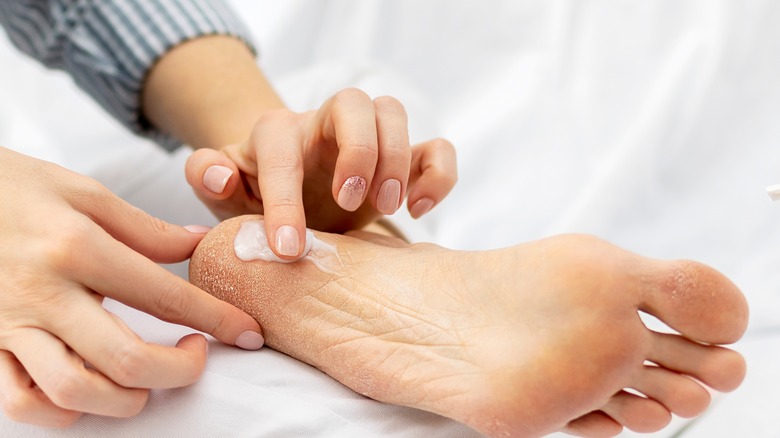How To Banish Unsightly Cracked Heels For Good
Your body does a lot of work every day. Your hands help you write, play, and take the groceries into the house in one trip; your skin protects you from external factors; and your feet support your weight throughout the day. While we know to wash our hands regularly and moisturize our skin, a lot of the time, we do not pay extra attention to our feet. This leads to certain conditions like fungal infections, calluses, and, sometimes, cracked heels. Cracked heels are also known as heel fissures and are more common than you think. In fact, a survey by the Institute for Preventive Foot Health (IPFH) showed that up to 20% of adults in the United States experience cracked skin on their feet.
Cracked heels are not the prettiest thing and many people spend a lot of money and time looking for the best way to get rid of them. To do that, you'll need to know why your heels crack and how to prevent that from happening further.
Why you have cracked heels
Cracked heels usually happen when the skin on the feet is quite dry. The cracks come about when the fat pads under your feet expand while walking or standing, causing hardened skin, also known as calluses, to break apart and form fissures or cracks (per Foot & Ankle Center of Teaneck). Wearing open-heel footwear, such as sling-back pumps or flip flops, and standing for a long time add pressure on your heels and lead to cracking. Calluses that break to form cracked heels or fissures also form by using harsh soaps that strip the skin of natural oils, not moisturizing the skin, and taking long, hot showers.
Cracked heels are mostly harmless, being more of an aesthetic and personal care problem than a health issue. But sometimes, your cracked heels can be a sign of an underlying health problem in your body. According to Healthline, cracked heels can also be caused by several medical conditions such as psoriasis, atopic dermatitis, diabetes, and juvenile plantar dermatosis amongst others.
How to get rid of your cracked heels
To get rid of your cracked heels, try incorporating a heel balm into your body care routine. The American Academy of Dermatology Association (AAD) recommends applying a heel balm containing salicylic acid or an alpha hydroxy acid (AHA) within five minutes of bathing. During this time, your skin is still damp and more permeable, allowing these exfoliating ingredients to soften your calluses.
Another step to getting rid of your cracked heels is soaking your feet. After dipping your feet in soapy water for 20 minutes, WebMD says to use a pumice stone or loofah to scrub your heels gently. Some recommend adding home remedies like vinegar to your foot soak. Avoid doing this on dry feet as it can cause greater damage. Following this with petroleum jelly on your heels will lock in moisture and get rid of cracked heels faster. The AAD also recommends wearing thick socks to lock in more moisture and avoid staining your bed.
To prevent more cracks while treating your heels, using a liquid skin protectant or bandage is another great way to care for cracked heels. The American Chemical Society's Chemical & Engineering News (C&EN) site describes a liquid bandage as "a colorless adherent material that can be sprayed or painted directly on a wound." After applying it to dry skin, the liquid bandage covers the wound to avoid infections and help it heal faster.
How to prevent cracked heels for good
Getting rid of your cracked heels without learning how to ensure they never occur again is half the story. To prevent cracked heels, prioritize moisture. Moisturizing with heel sleeves, creams with urea like the Chirocream Heel Balm, and home remedies like mashed bananas will ensure your heels stay hydrated and healthy (via the Mayo Clinic). It is also important to review your footwear and how it affects your heels. Open-heel footwear like flip flops, sling-back pumps, and sandals offer no protection or shock absorption to your heels and cause cracking after a long time. Shoes that are too tight or have heels that are thin and cause your feet's fat pads to expand are also not a good idea. Going for covered footwear with soft material on the inside and avoiding standing for long to remove pressure from your heels are great ways to prevent heel fissures.
Ultimately, while unlikely, your cracked heels could be a symptom of an underlying medical condition, so seeing your doctor to ensure your cracked heels are not signs of a deeper problem is a good idea. And if you still need guidance on how to treat your cracked heels, visiting a podiatrist might be the best step you can take, pun intended.



